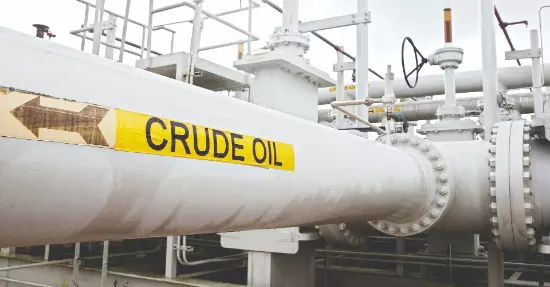India’s oil demand to outpace all other countries through 2050

New Delhi: India’s oil demand will rise more than those of any other country through 2050 on the back of its fast growing economy, and will account for over 12 per cent of the global energy market, BP chief economist Spencer Dale said Monday.
India is the world’s third-largest oil importing and consuming nation, and fourth-largest LNG importer.
Its oil demand is projected to grow from 5.4 million barrels per day to 9.1 million bpd by 2050 while natural gas consumption more than doubles to 153 billion cubic meters from 63 bcm.
At a conservative 5 per cent economic growth rate per year between 2023 to 2050 - double the rate of growth of the global economy - the country’s primary energy consumption grows strong. By 2050, India will account for 12 per cent of the world’s demand, up from 7 per cent in 2023, he said.
“When we look ahead, India is the fastest-growing energy market in the world,” he said unveiling BP’s Energy Outlook 2025. “So when we think about what’s driving global energy, India is at the heart of that process.”
The outlook gives projections under two scenarios - ‘Current Trajectory’ and ‘Below 2-Degree’ that depicts an energy future aligned with the Paris Agreement’s goal of limiting global warming to below 2 degrees Celsius.
“Energy demand increases in all scenarios driven by robust economic growth and rising prosperity,” he said.
The Outlook projects renewables growing strongly driven by solar and wind but coal remaining dominant. “In current trajectory, coal remains India’s largest source of energy, with its share in the energy mix staying above 40 per cent in 2050. However, in Below 2-Degrees, coal’s share drops sharply to 16 per cent.”
India’s consumption of natural gas increases in both scenarios, growing on average by 1-3 per cent per year to 2050. India’s oil demand would make up for 10 per cent of global oil consumption.
Renewable energy becomes the largest source of primary energy in 2050 in Below 2-Degrees, and the second largest in Current Trajectory.
Electricity plays an increasingly important role in meeting India’s energy needs. In 2023 around 20 per cent of energy was consumed in the form of electricity.
By 2050, this grows to over 30 per cent in Current Trajectory and to below 50 per cent in Below 2-Degrees.
China, Dale said, is one of the fastest growing major economies in the world. India is growing more quickly.
“India is one of the fastest growing energy markets in the world. Its demand for energy is growing more quickly than anywhere else, and it is going to need more of all types of energy,” he said adding while the share of renewable sources such as solar and wind grows, fossil fuels will continue to stay.
On India targeting 500 gigawatts of non-fossil electricity capacity by 2030, he said, “In our Current Trajectory, it (capacity) is just a little bit shy of that, but it meets it within the year or two after that.”
The achievements by 2030 too are “quite remarkable”, he said.
Asked about geopolitics and increasing trend of weaponization of energy, he said increased geopolitical fragmentation will lead to greater energy differentiation and how countries react will vary.
For countries like India which are heavily reliant on imports to meet its energy needs, the focus would be on reducing imports and increasing domestic production.
Asked about peak demand, he said, “India’s oil demand continues to grow all the way out to 2050... natural gas demand also increases substantially, almost doubling by 2050.”
In a world wanting to do a rapid, deep decarbonisation, oil and natural demand across the world would need to start to fall. “In India, oil continues to grow (in such a scenario) through the early part of the 2030s and it plateaus around six and a half million barrels a day and then starts to decline,” he said adding natural gas also continues to grow through this decade and then starts to decline.
He hastened to add that this was a “sort of very hypothetical scenario” of the world wanting to decarbonise quickly.
India’s import dependence remains “pretty high” in both of these scenarios, he said.
This because domestic production grows, it doesn’t grow sufficiently quickly to meet the growth in demand.



